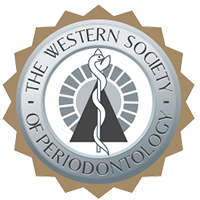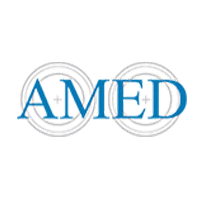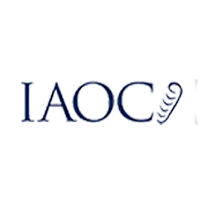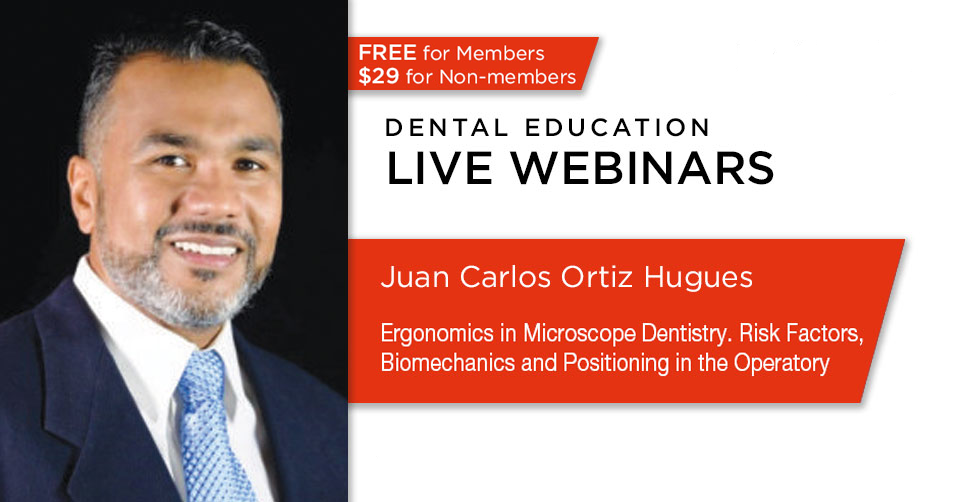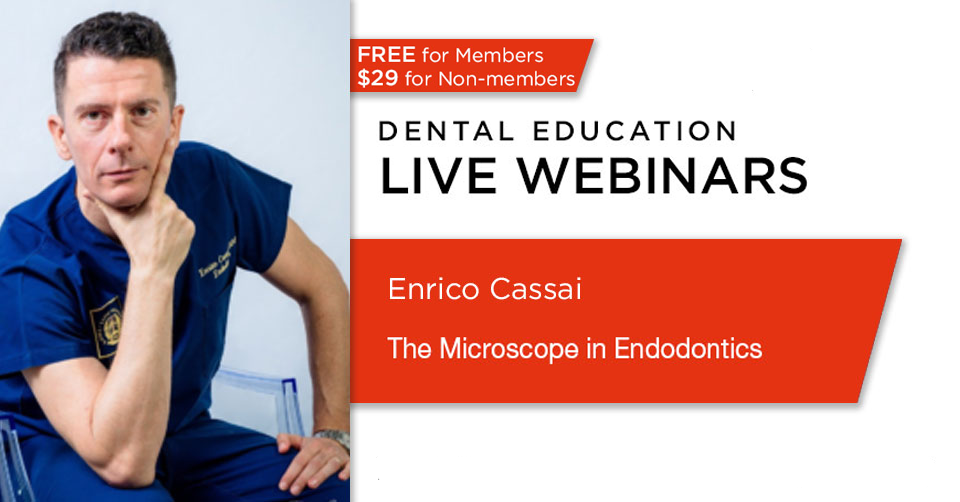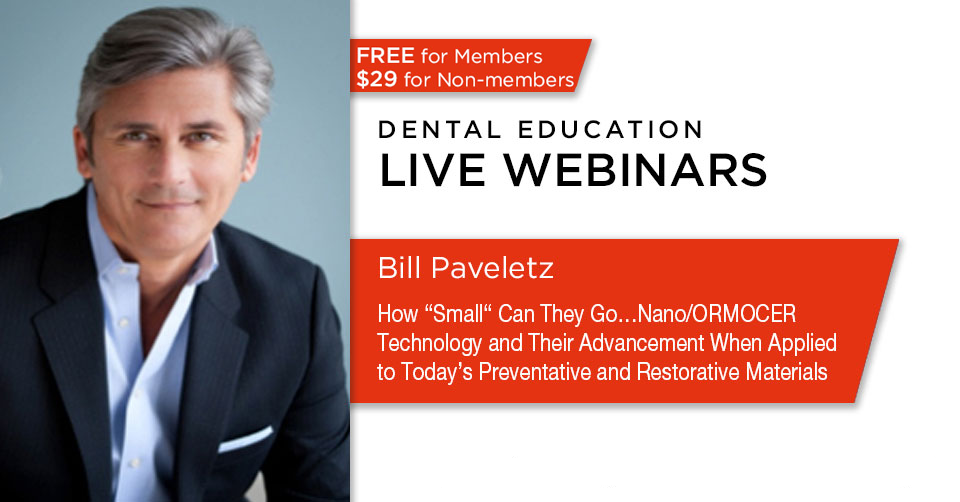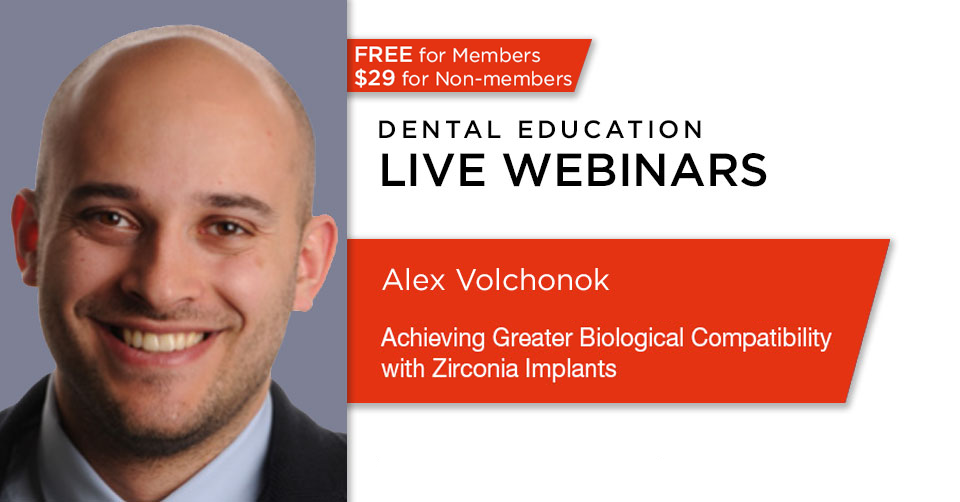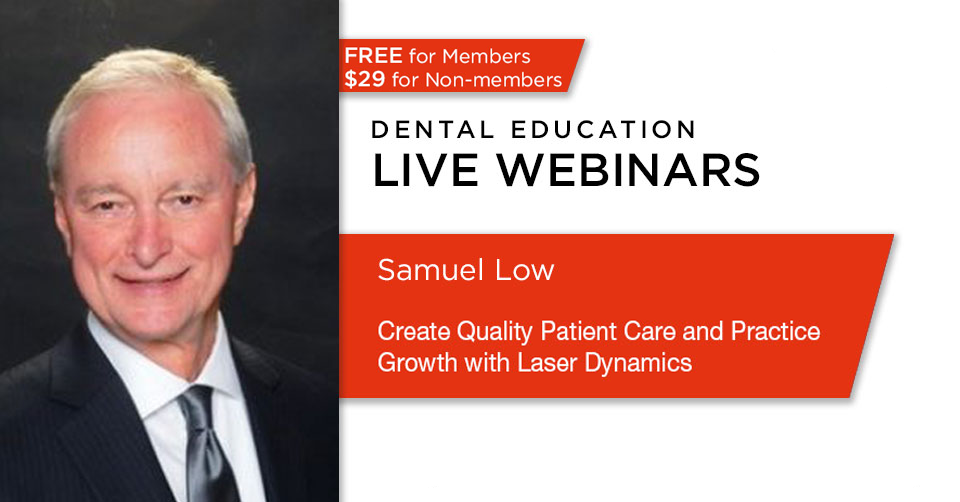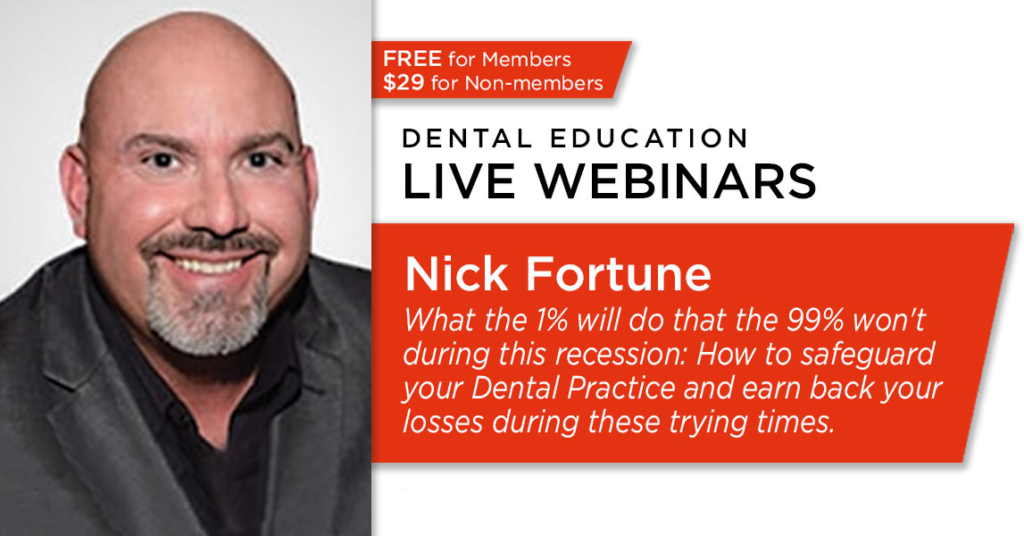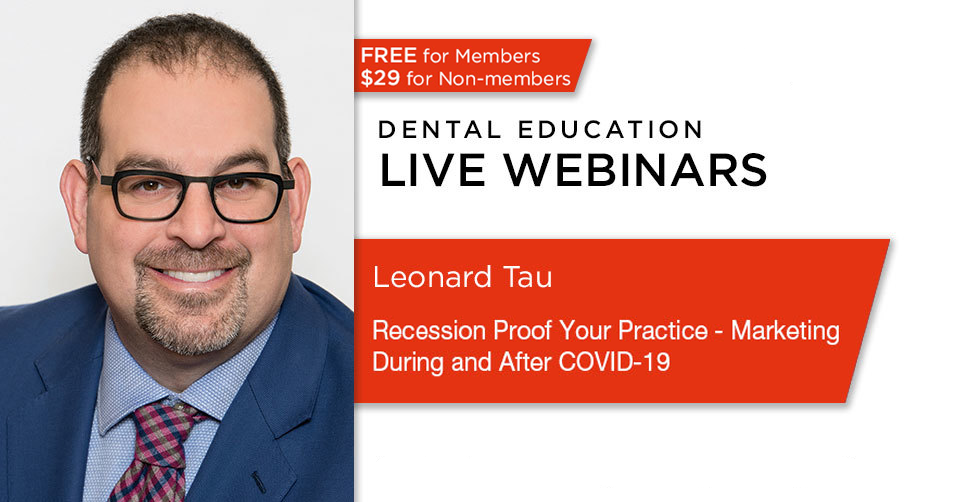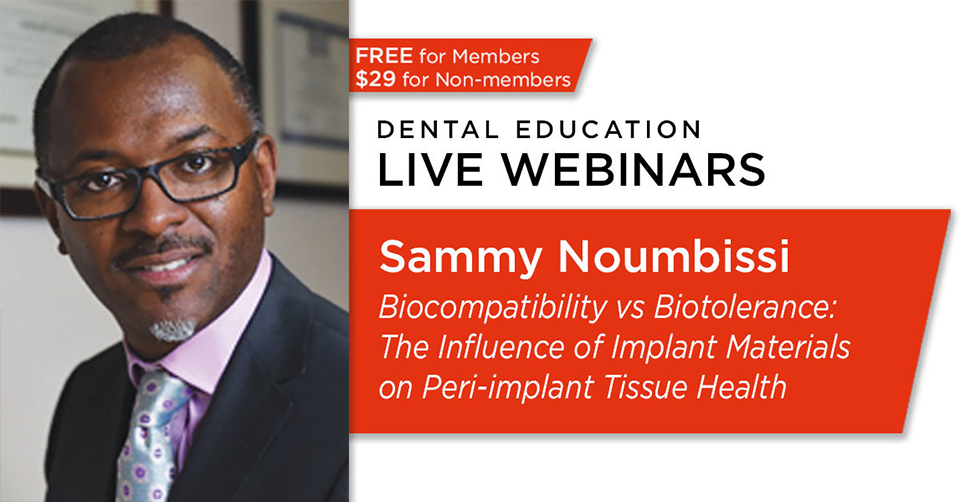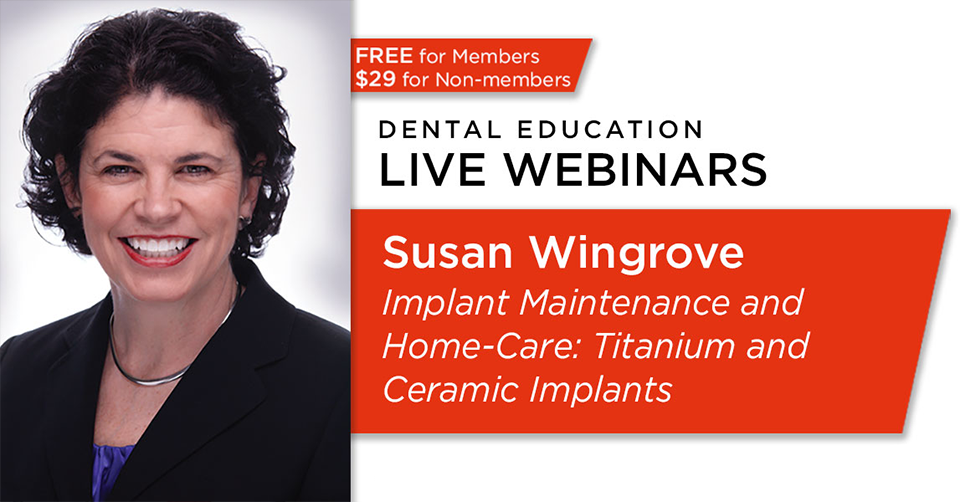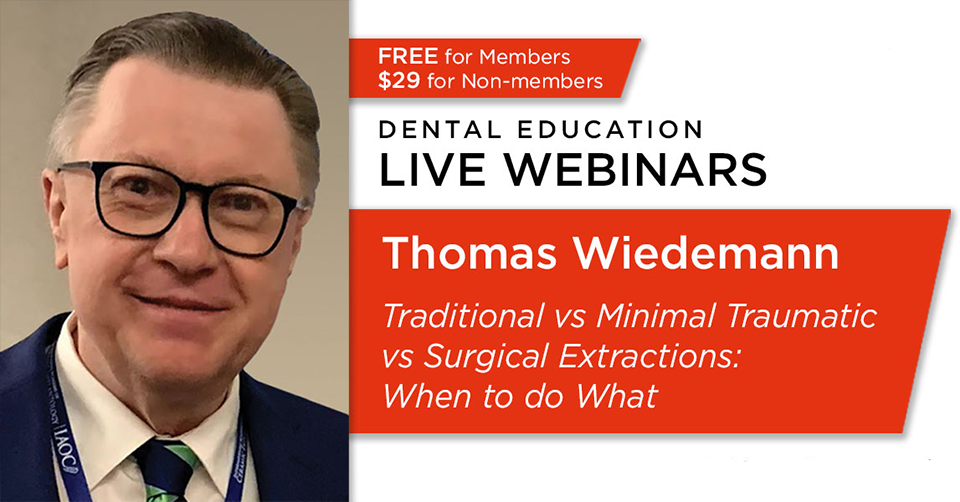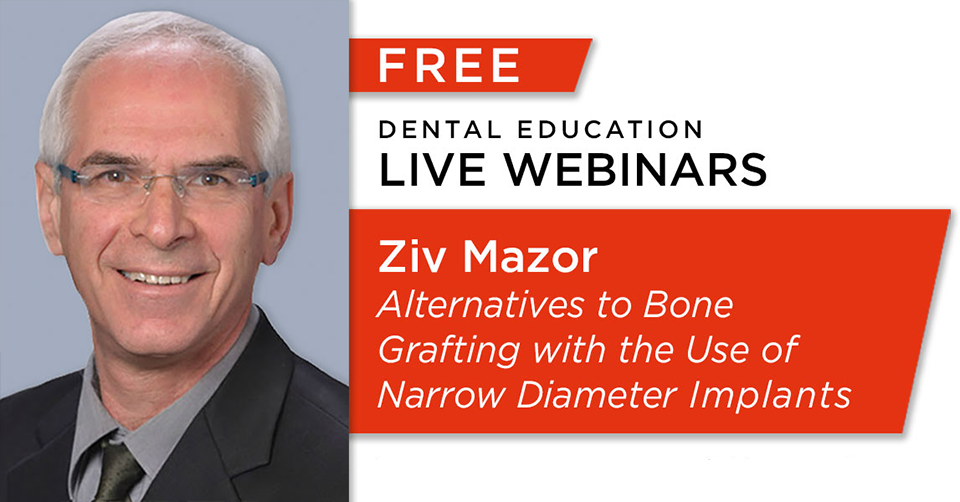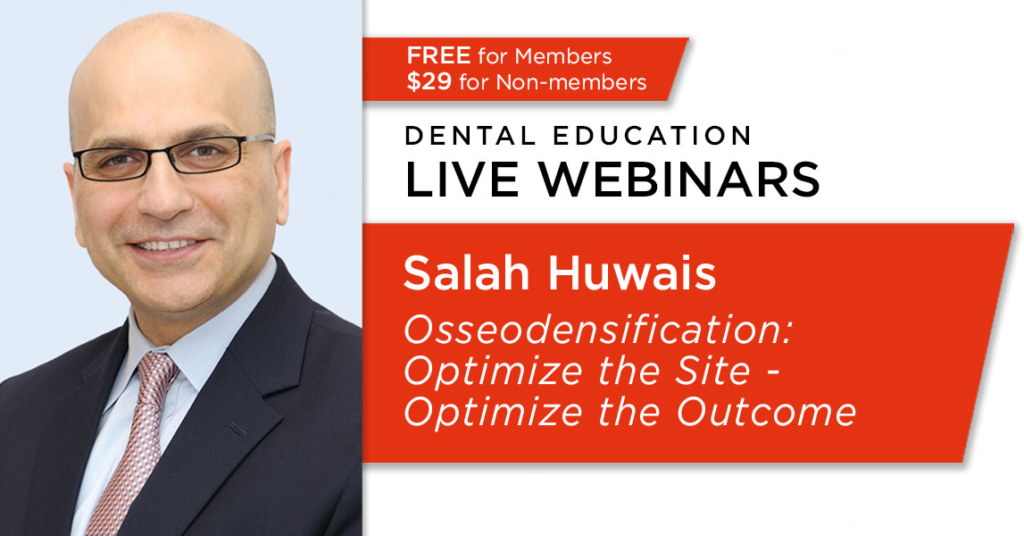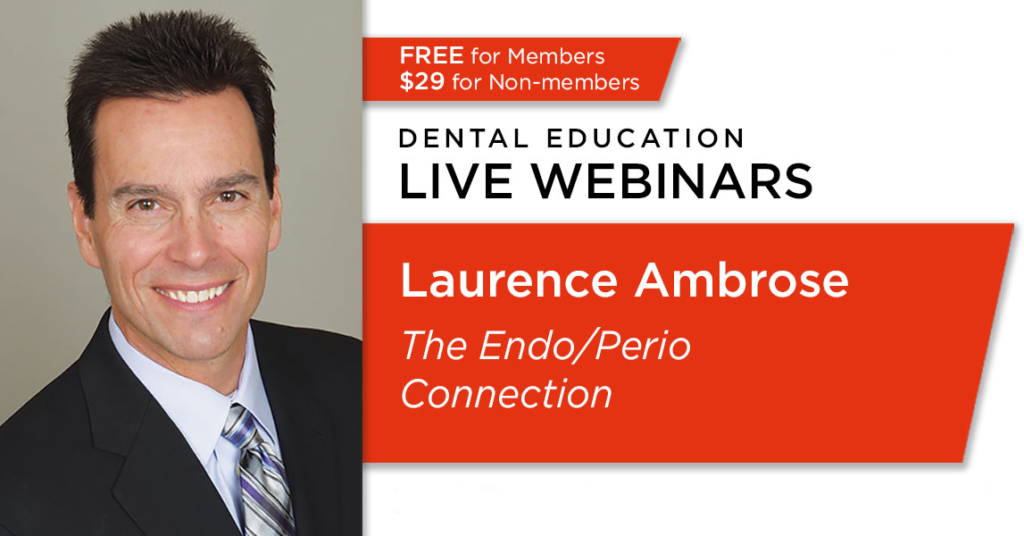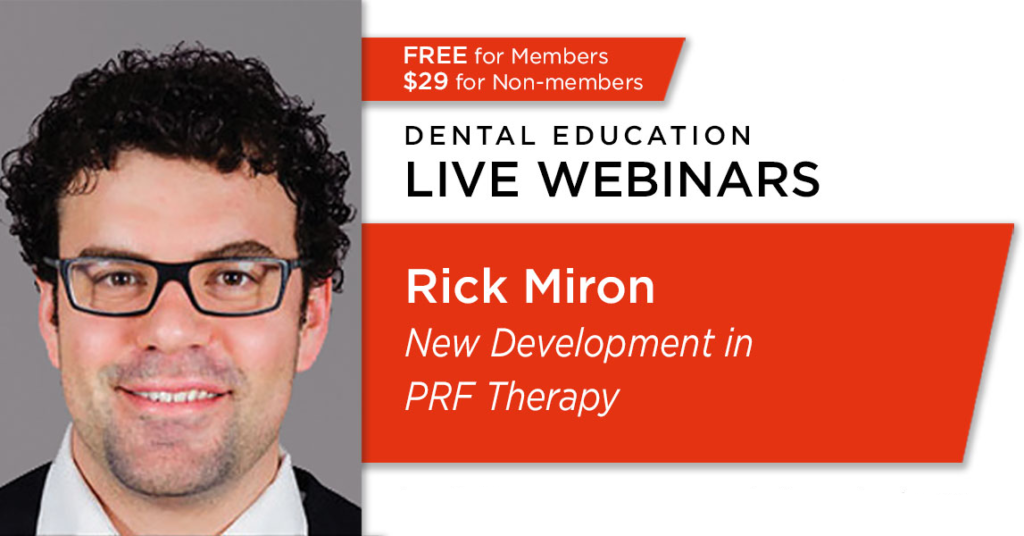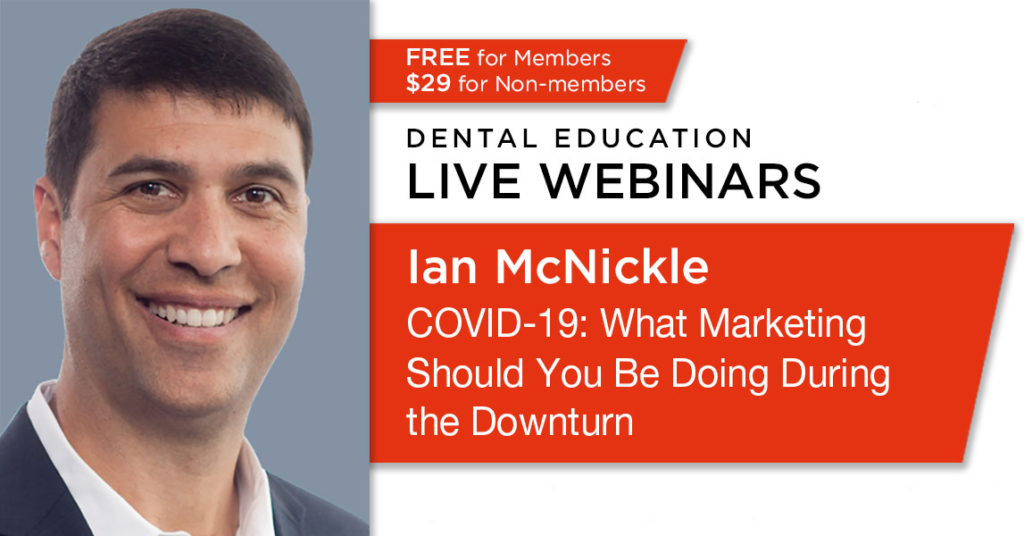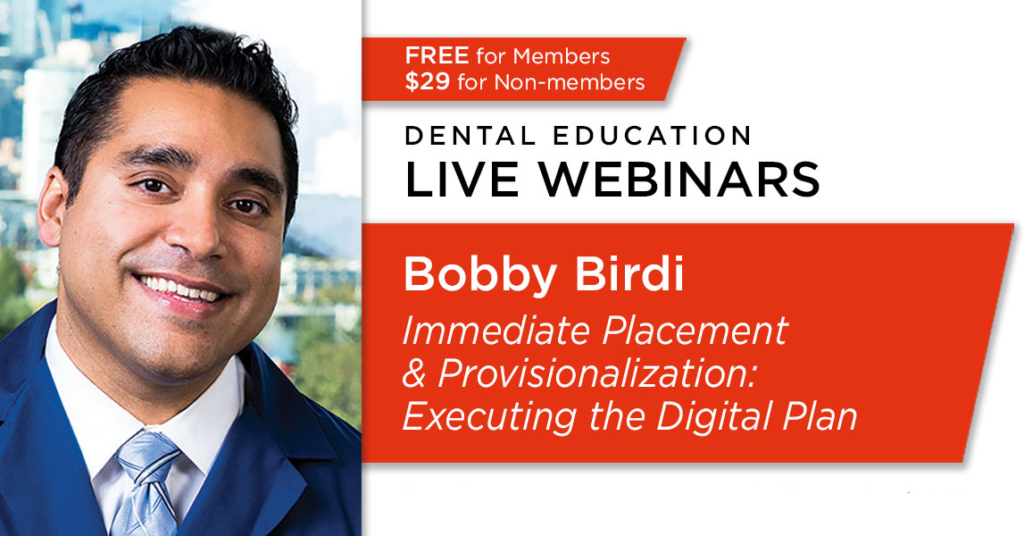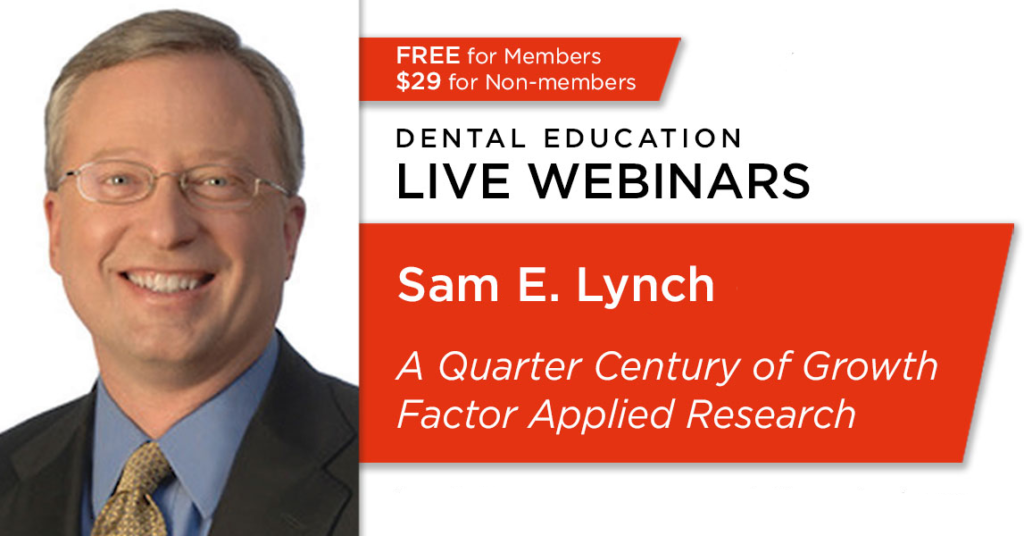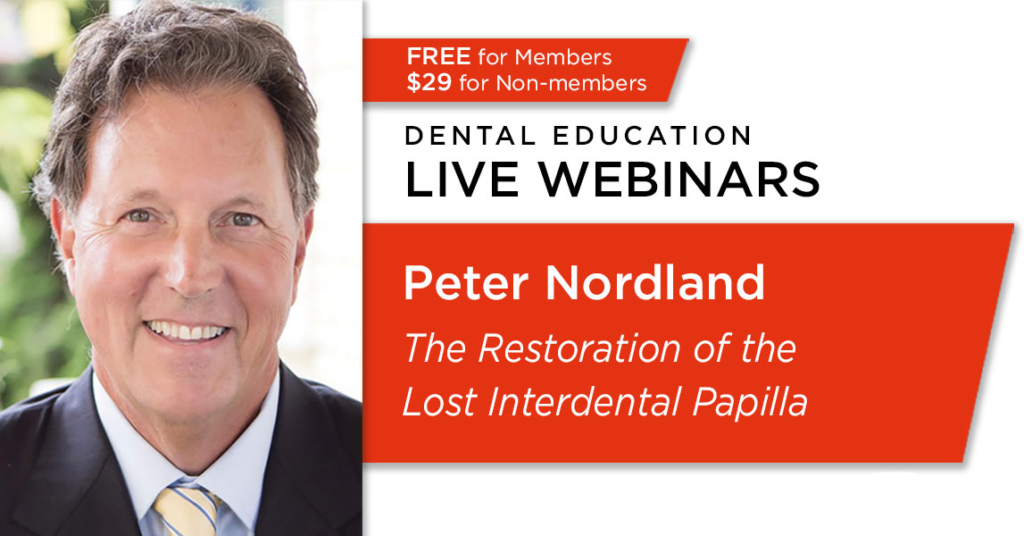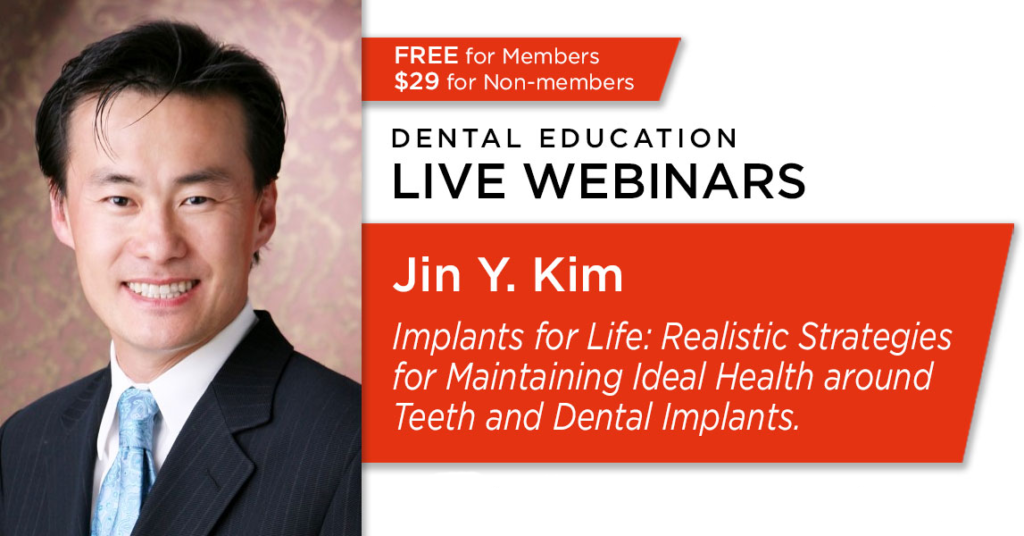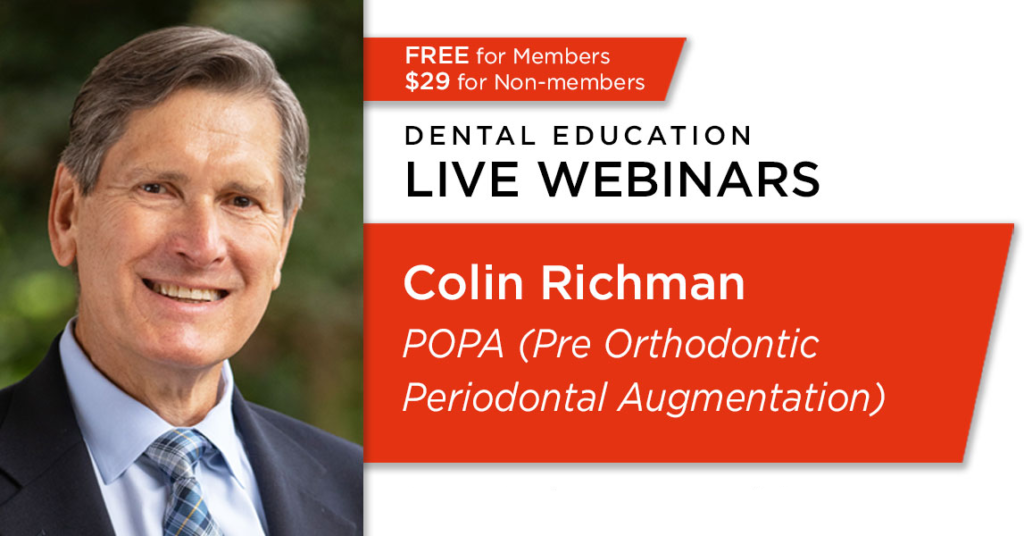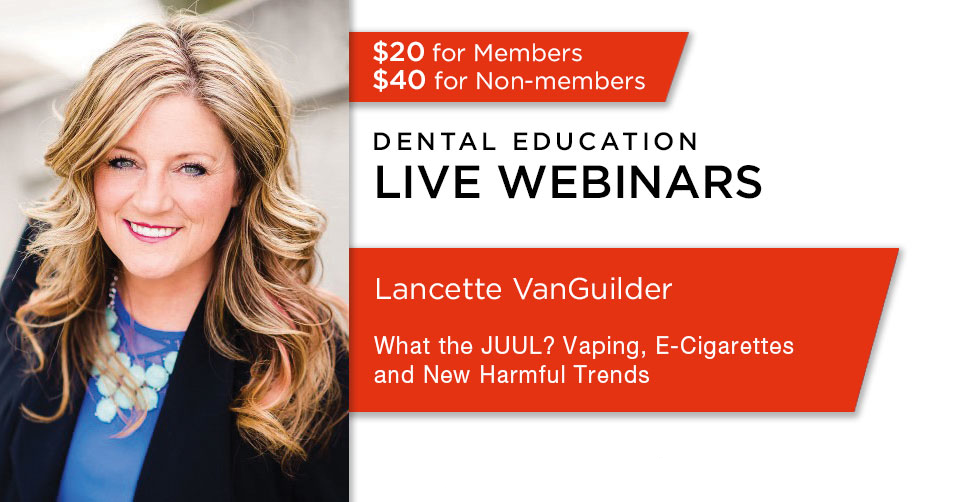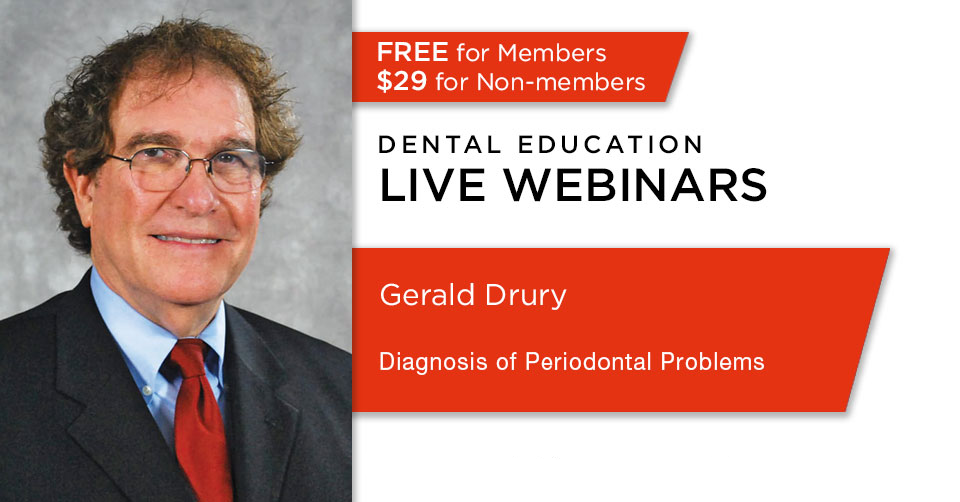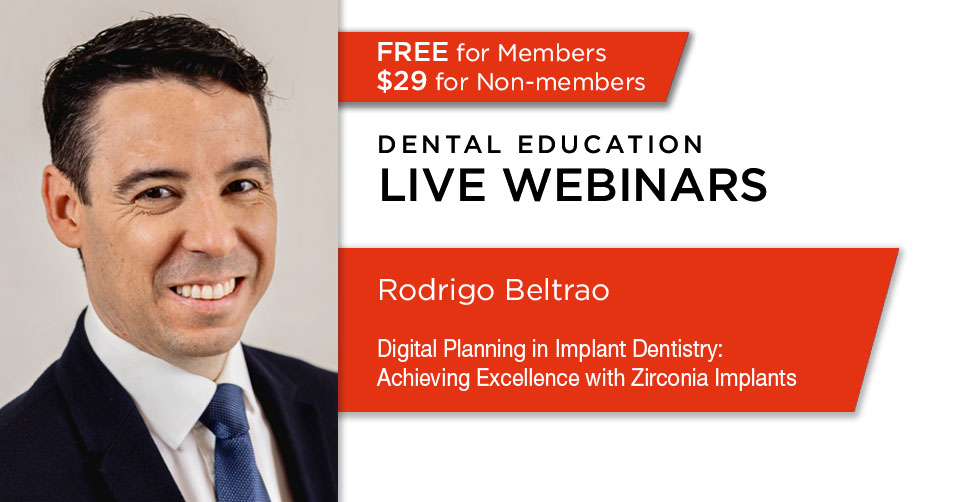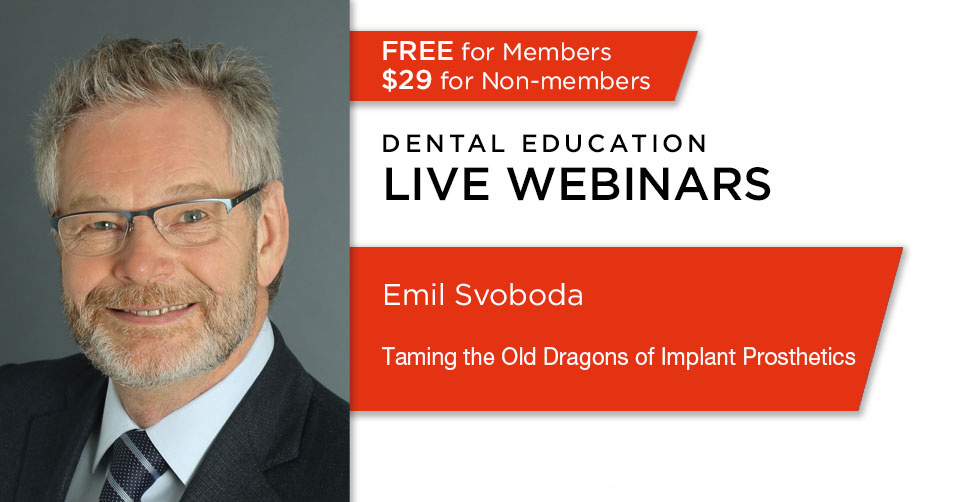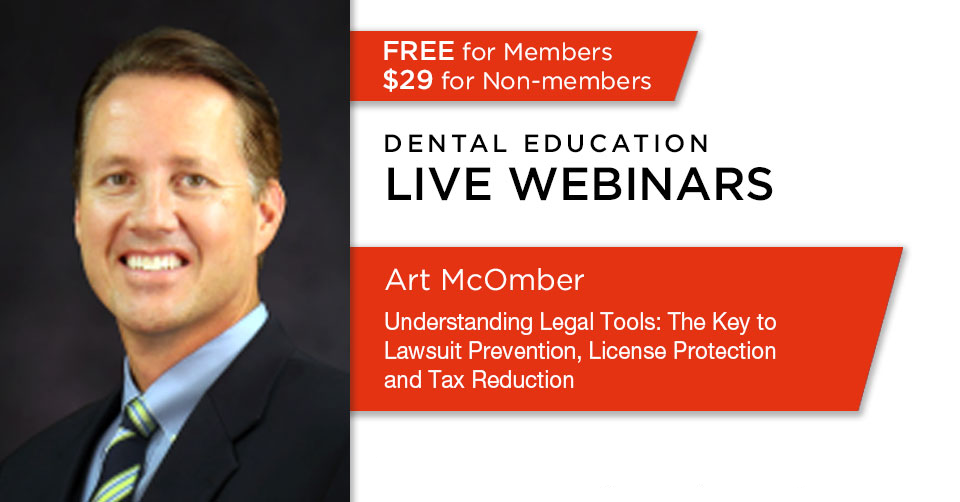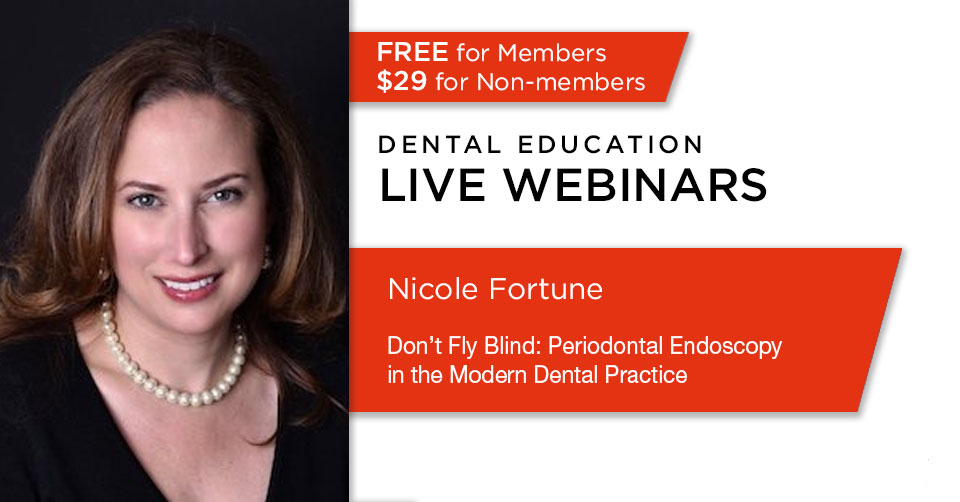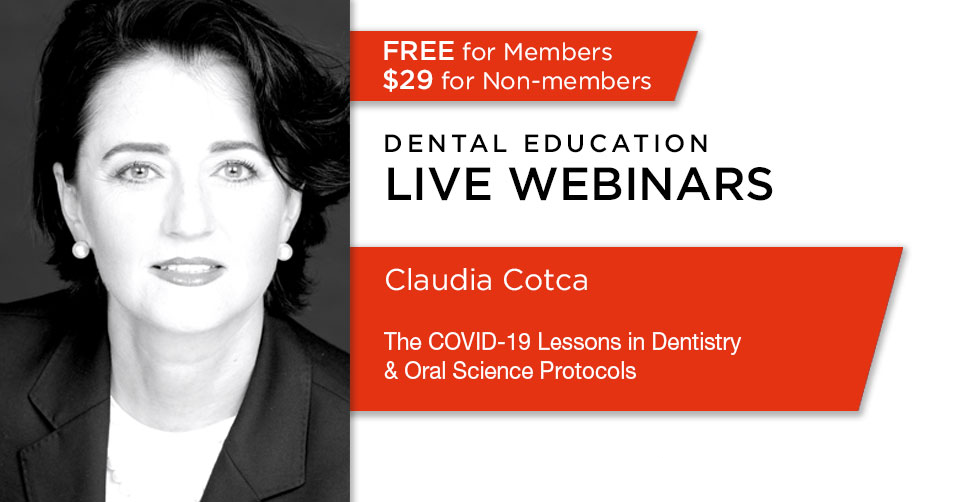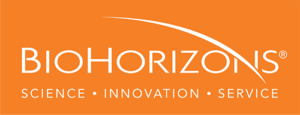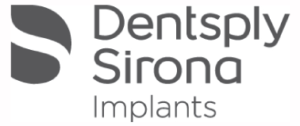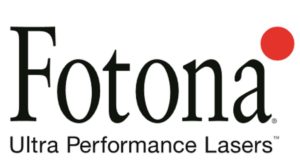Dental Education Self-Instruction
Goldman Dental Management and the following dental societies (Western Society of Periodontology, Academy of Microscope Enhanced Dentistry, Int’l Society of Periodontal Plastic Surgeons, Int’l Academy of Ceramic Implantology, and the Nevada Dental Hygienists’ Association) have created webinars featuring many of the top doctors, hygienists and business experts in America and abroad. We know that many of you are homebound during this time so we want to give you the continuing education you need. All members of these associations will receive these for FREE. That’s right! No charge at all! Just another benefit of membership.
For non-members each hour course is $29.00. Non-members can register by click on any of the societies’ logos underneath each course.
After you register, the link will be in the confirmation email from “123signup” you must open the link and create an account.
Course Description:
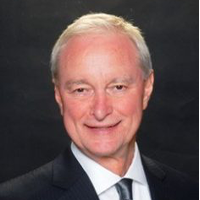 The introduction of dental implants in the overall management of patients is at an all-time high and dental professionals have yet to achieve consensus for a standard of care. Recent data now demonstrates that inflammation associated with implants is commonplace and can result in loss of the implant with failure rates continuing to be at an all time high. Implant diseases range from mucositis to bone loss implantitis. Long-term implant success can depend on quality prevention, treatment and maintenance. The dental team (especially the dental hygienist) requires successful systems and tools to enhance longevity and implant health.
The introduction of dental implants in the overall management of patients is at an all-time high and dental professionals have yet to achieve consensus for a standard of care. Recent data now demonstrates that inflammation associated with implants is commonplace and can result in loss of the implant with failure rates continuing to be at an all time high. Implant diseases range from mucositis to bone loss implantitis. Long-term implant success can depend on quality prevention, treatment and maintenance. The dental team (especially the dental hygienist) requires successful systems and tools to enhance longevity and implant health. Course Description:
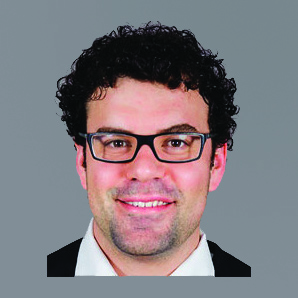 Dental implants are generally considered a safe and highly predictable surgical procedure performed by many clinicians with the aim of replacing missing teeth. Yet to this day, a number of implants placed in adequate bone volume are lost each year within a 2-8 week period following implant placement for yet explained reasons. As society continues to consume lower quality foods and rely more heavily on fast foods, a large percentage of today’s population is increasing demonstrating vitamin deficiency upon testing owing to this lack of nutritional intake. These deficiencies are even more pronounced in the aging population where a greater percentage of dental implants are placed. Unfortunately, one of the most prominent deficiencies known to mankind is that of vitamin D, a water-soluble vitamin critical for proper immune function as well as bone homeostasis. Over the past decade, vitamin D deficiency has been observed in ~70% of the population and particularly in post-menopausal osteoporotic women where vitamin D is commonly prescribed (with various co-factors such as vitamin K) with the aim of further optimizing bone density and halting disease progression. Interestingly, recent dental implant studies have found that while smoking and generalized periodontitis is generally associated with a ~50%-200% increase in dental implant failure, studies have more recently shown that vitamin D deficiency is associated with up to a 300% increase in early implant failure. These shocking findings further highlight the fact that systemic health, including adequate vitamins and minerals, play a critical role in biomaterial/dental implant integration.
Dental implants are generally considered a safe and highly predictable surgical procedure performed by many clinicians with the aim of replacing missing teeth. Yet to this day, a number of implants placed in adequate bone volume are lost each year within a 2-8 week period following implant placement for yet explained reasons. As society continues to consume lower quality foods and rely more heavily on fast foods, a large percentage of today’s population is increasing demonstrating vitamin deficiency upon testing owing to this lack of nutritional intake. These deficiencies are even more pronounced in the aging population where a greater percentage of dental implants are placed. Unfortunately, one of the most prominent deficiencies known to mankind is that of vitamin D, a water-soluble vitamin critical for proper immune function as well as bone homeostasis. Over the past decade, vitamin D deficiency has been observed in ~70% of the population and particularly in post-menopausal osteoporotic women where vitamin D is commonly prescribed (with various co-factors such as vitamin K) with the aim of further optimizing bone density and halting disease progression. Interestingly, recent dental implant studies have found that while smoking and generalized periodontitis is generally associated with a ~50%-200% increase in dental implant failure, studies have more recently shown that vitamin D deficiency is associated with up to a 300% increase in early implant failure. These shocking findings further highlight the fact that systemic health, including adequate vitamins and minerals, play a critical role in biomaterial/dental implant integration.
Course Description:
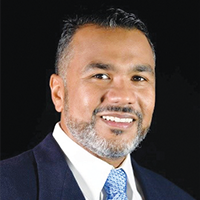 Understand biomechanics and risk factors to eliminate neck and back pain in dentistry through use of the dental microscope is the key for a prolonged efficient healthy practice. Dentistry causes neck and back pain, 1/3 of all dentist experiment musculeskeletal pain dissorders due to bad and sustained static postures. How traditional dental posture violates all of the science we have on safe work practices for preventing neck and back injuries and how the microscope can’t be beat for the 1 of the pillars of quality dentistry:Ergonomics. Positioning is also fundamental of the good use of the microscope, if why know the why we will know how.
Understand biomechanics and risk factors to eliminate neck and back pain in dentistry through use of the dental microscope is the key for a prolonged efficient healthy practice. Dentistry causes neck and back pain, 1/3 of all dentist experiment musculeskeletal pain dissorders due to bad and sustained static postures. How traditional dental posture violates all of the science we have on safe work practices for preventing neck and back injuries and how the microscope can’t be beat for the 1 of the pillars of quality dentistry:Ergonomics. Positioning is also fundamental of the good use of the microscope, if why know the why we will know how.
Course Description:
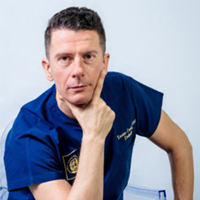 We are in 2020 and, in the last 100 years, we have seen many changes in dentistry. If we focus on endodontics, we can say that big progresses have been done in the equipment and tools that we use, making our therapies faster, easier and more predictable. If I had to choose the innovation that changed endodontics the most, I would surely pick the operating microscope because the more I see, the more I can do. Of course there is a medium-long learning curve, but the benefits of using a microscope are immediate and evident. First of all, it improves the working posture, keeping the back in a straight position and diminishing the risk of developing skeletal problems over the years. From the operative point of view, the possibility of working in an magnified and illuminated field makes it possible to treat the tooth in a faster and more predictable way and, above all, to treat complex cases. In my communication I would like to emphasize the clinical advantages of using the microscope, starting from the diagnosis and going to the operative part such as: finding missed canals, removing fiber posts, treating perforations, filling apices, removing broken instruments from the canals and performing endodontic surgery.
We are in 2020 and, in the last 100 years, we have seen many changes in dentistry. If we focus on endodontics, we can say that big progresses have been done in the equipment and tools that we use, making our therapies faster, easier and more predictable. If I had to choose the innovation that changed endodontics the most, I would surely pick the operating microscope because the more I see, the more I can do. Of course there is a medium-long learning curve, but the benefits of using a microscope are immediate and evident. First of all, it improves the working posture, keeping the back in a straight position and diminishing the risk of developing skeletal problems over the years. From the operative point of view, the possibility of working in an magnified and illuminated field makes it possible to treat the tooth in a faster and more predictable way and, above all, to treat complex cases. In my communication I would like to emphasize the clinical advantages of using the microscope, starting from the diagnosis and going to the operative part such as: finding missed canals, removing fiber posts, treating perforations, filling apices, removing broken instruments from the canals and performing endodontic surgery.
Course Description:
 Attendees will be educated briefly on the history of “Nano and ORMOCER technology” with emphasis on their strengths and weaknesses. The lecturer will review and discuss the different types of Nano-hybrid and ORMOCER technologies used in today’s resin-based preventative and restorative materials. The forum will focus on understanding their chemical interaction and construction as those qualities relate to the clinical efficiency, efficacy and success of procedures done by today’s dentists and hygienists.
Attendees will be educated briefly on the history of “Nano and ORMOCER technology” with emphasis on their strengths and weaknesses. The lecturer will review and discuss the different types of Nano-hybrid and ORMOCER technologies used in today’s resin-based preventative and restorative materials. The forum will focus on understanding their chemical interaction and construction as those qualities relate to the clinical efficiency, efficacy and success of procedures done by today’s dentists and hygienists.
Course Description:
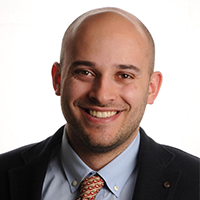 Learning Objectives:
Learning Objectives:
• Understanding the evolution of Ceramic Dental Implants.
• Understanding the biological responses of both soft and hard tissues to zirconia implants.
• Learn about the unique surgical and restorative capabilities with the most advanced two-piece zirconia implant.
Course Description:
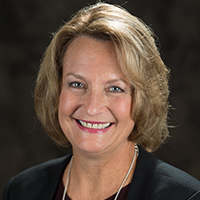 Dental professionals often need a review of common pathologies identified during assessment procedures. Oral manifestations of developmental conditions, microbial infections, chronic irritations and the like are commonly recognized but can be confused with other similar appearing conditions. This course will present a variety of common pathologies, discussing etiology, clinical appearance, treatment options and other lesions to consider in the differential diagnosis. It can serve as a good “refresher” course for any member of the dental team. At the conclusion of the course participants will be able to: 1. Describe the diagnostic protocol utilized when identifying oral lesions….2. List the etiology, clinical appearance and treatment options for a variety of common oral pathologies and anomalies…3. Discuss other pathologies to be considered in the differential diagnosis of pathologies presented.
Dental professionals often need a review of common pathologies identified during assessment procedures. Oral manifestations of developmental conditions, microbial infections, chronic irritations and the like are commonly recognized but can be confused with other similar appearing conditions. This course will present a variety of common pathologies, discussing etiology, clinical appearance, treatment options and other lesions to consider in the differential diagnosis. It can serve as a good “refresher” course for any member of the dental team. At the conclusion of the course participants will be able to: 1. Describe the diagnostic protocol utilized when identifying oral lesions….2. List the etiology, clinical appearance and treatment options for a variety of common oral pathologies and anomalies…3. Discuss other pathologies to be considered in the differential diagnosis of pathologies presented.
Course Description:
 Ready to enter the laser world? Or have an “unused” laser in the closet? Create a niche practice by moving into laser minimally invasive dentistry. From periodontal management to various soft and hard tissue procedures, laser technology creates positive case acceptance. Determine the appropriate laser for your practice by utilizing a defined decision protocol for productive use of the laser. Lasers offer a safe and effective alternative for a wide range of dental procedures. Some of the advantages include: increased precision, controlled bleeding, accelerated healing, reduced post-operative issues, shorter procedure time, less pain, greater case acceptance and a more relaxed experience for the patient. Explore manipulating gingivae for access, esthetics, and restorative ease.
Ready to enter the laser world? Or have an “unused” laser in the closet? Create a niche practice by moving into laser minimally invasive dentistry. From periodontal management to various soft and hard tissue procedures, laser technology creates positive case acceptance. Determine the appropriate laser for your practice by utilizing a defined decision protocol for productive use of the laser. Lasers offer a safe and effective alternative for a wide range of dental procedures. Some of the advantages include: increased precision, controlled bleeding, accelerated healing, reduced post-operative issues, shorter procedure time, less pain, greater case acceptance and a more relaxed experience for the patient. Explore manipulating gingivae for access, esthetics, and restorative ease.
Learning Objectives:
- Determine the effectiveness of utilizing various laser wavelengths for soft and hard tissue
- Review the characteristics of a smart laser acquisition: cost, size, and ease of use
- Consider laser applications to nonsurgical periodontics
- Understand indications for using laser in crown lengthening and pre-orthodontic procedures including esthetics, frenectomy and troughing
- Explore effective communication strategies for laser case acceptance with emphasis on patient comfort
- Review third party coding for laser procedures
Course Description:
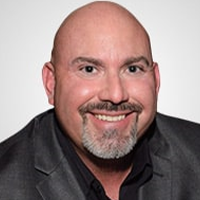 Learn how to protect and recession-proof your business and personal assets from litigation during this in-depth discussion on proper entity structuring, tax reduction, and Medical License Protection. More and more lawsuits are exceeding the limits and caps of most insurance policies; it is more important than ever to use the proper legal structure to protect your Practice. Your Medical License is the most important asset you own, learn how to protect it forever. Invest in anything Tax-Free and recession-proof your practice using The Investment Grade Insurance Contract, and ultimately gain the freedom to run your Practice without worrying about protecting your hard-earned income from legal predators at this session
Learn how to protect and recession-proof your business and personal assets from litigation during this in-depth discussion on proper entity structuring, tax reduction, and Medical License Protection. More and more lawsuits are exceeding the limits and caps of most insurance policies; it is more important than ever to use the proper legal structure to protect your Practice. Your Medical License is the most important asset you own, learn how to protect it forever. Invest in anything Tax-Free and recession-proof your practice using The Investment Grade Insurance Contract, and ultimately gain the freedom to run your Practice without worrying about protecting your hard-earned income from legal predators at this session
At the end of this course, the attendee will have learned:
The proper legal structure for your business to maximize income tax reduction, The LLLP.
- The importance of Using The investment Grade Insurance Contract to Invest in anything Tax-Free.
- How to avoid probate and leave a tax-free estate
- Multiple sources of lawsuits that could ruin your business and personal financial future and how to protect against them
- How to eliminate losses from lawsuits not covered by insurance.
- How to protect their Medical License from reports to the NPDB and State Boards.
Course Description:
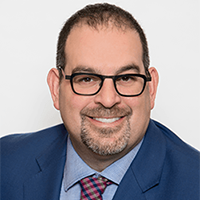 Dental practices have shut down do to COVID-19, what are you doing to market and communicate with your patients during this time when revenue streams have been shut off almost completely. What are your plans when your office opens back up again. In this one hour webinar, Dr. Len Tau shares some strategies with you to help your practice survive during this economic downturn and remain relevant so once things pick up again you are the goto practice in your area.
Dental practices have shut down do to COVID-19, what are you doing to market and communicate with your patients during this time when revenue streams have been shut off almost completely. What are your plans when your office opens back up again. In this one hour webinar, Dr. Len Tau shares some strategies with you to help your practice survive during this economic downturn and remain relevant so once things pick up again you are the goto practice in your area.
Course Description:
 Replacement of teeth has predictably been achieved with dental implants and metal implants have performed very well over the last few decades. However, every solution comes with its problems and the rates of acute and chronic loss of bone around implants have been on the rise, investigations have and continue to take place in that regards. Until recently such problems have been attributed for the most part to bacteria, functional factors or a combination. Only recently has the implant material itself been investigated as a potential cause of peri-implant bone loss.
Replacement of teeth has predictably been achieved with dental implants and metal implants have performed very well over the last few decades. However, every solution comes with its problems and the rates of acute and chronic loss of bone around implants have been on the rise, investigations have and continue to take place in that regards. Until recently such problems have been attributed for the most part to bacteria, functional factors or a combination. Only recently has the implant material itself been investigated as a potential cause of peri-implant bone loss.
Educational Objectives:
- How does corrosion occur on metal implants?
- Understand the role of materials in peri-implantitis
- Implications of ions release on peri-implant and general health
Course Description:
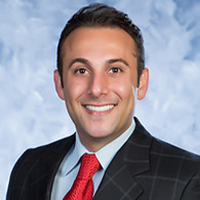 Telehealth and specifically Teledentistry is changing the landscape and manner in which dental care is being delivered. Virtual dental consultations and triage as well as the establishment of patients as patients of records have all proven to be successful in increasing access to care and in making dental care more affordable for the patients while generating income for dentists. The Covid-19 Coronavirus has put teledentistry on the map and it is here to stay. Dentulu, one of the leading Teledentistry companies is spearheading the efforts to help dentists maintain continuity of care with their patients and generate new patients and income during the current downtime.
Telehealth and specifically Teledentistry is changing the landscape and manner in which dental care is being delivered. Virtual dental consultations and triage as well as the establishment of patients as patients of records have all proven to be successful in increasing access to care and in making dental care more affordable for the patients while generating income for dentists. The Covid-19 Coronavirus has put teledentistry on the map and it is here to stay. Dentulu, one of the leading Teledentistry companies is spearheading the efforts to help dentists maintain continuity of care with their patients and generate new patients and income during the current downtime.
Dr. Arash Hakhamian is the CEO of Dentulu, an innovative Teledentistry company based in the USA. Dr. Hakhamian comes from a family of dentists and graduated from UCLA with a degree in Anthroplogy and USC where he attended dental school. He is a multi-practice dental owner and was the co-founder of the Global Dental Implant Academy. He was also the co-founder for the International Extraction Academy. He was voted as one of the Top 40 under 40 dentists by Incisal Edge magazine in 2018. He has served as the Special Olympics official dentist and also as an international volunteer in Guatemala for over a decade.
Course Description:
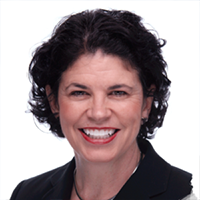 As dental professionals, we face challenges to assess, maintain and recommend home-care for all dental implant patients. This course will revel answers to the challenges of providing safe, effective implant maintenance, and peri-implantitis treatment that includes Ceramic Implants. End the confusion with a comprehensive system for assessment, instrumentation, monitoring, and home-care recommendations based on Susan’s textbook; Peri-Implant Therapy for the Dental Hygienist: Clinical Guide to Maintenance and Disease Complications.
As dental professionals, we face challenges to assess, maintain and recommend home-care for all dental implant patients. This course will revel answers to the challenges of providing safe, effective implant maintenance, and peri-implantitis treatment that includes Ceramic Implants. End the confusion with a comprehensive system for assessment, instrumentation, monitoring, and home-care recommendations based on Susan’s textbook; Peri-Implant Therapy for the Dental Hygienist: Clinical Guide to Maintenance and Disease Complications.
Educational Objectives:
- Learn the current research for new protocols, tools, and treatments for peri-implant therapy
- Review the Scanning Electron Microscope testing on hand and ultrasonic instruments to use to debride Ceramic Implants.
- Gain an understanding of America College of Prosthodontists (ACP) Guidelines for Recall and Maintenance of Patients with Implant-Borne Dental Restorations and 2018 World Workshop AAP/ EFP Classification and Conditions for Peri-Implant Disease.
- Put into practice evidence-based five-step protocol to assess and monitor dental implants.
- Provide safe implant maintenance and home-care recommendations for all forms of dental implants, their restorations/ prostheses including Ceramic Implants.
Susan Wingrove, BS, RDH, International speaker, author, researcher, instrument designer, and 2016 Sunstar RDH Award of Distinction recipient. Susan is member of the American Dental Hygienist’s Association, International Federation of Dental Hygienists, Oral-B Global Implant Board (P & G), and Western Society of Periodontology. Published author for multiple journal articles, Scientific Panel for ACP Clinical Practice Guidelines, as well as Implant Maintenance Textbook: Peri-Implant Therapy for the Dental Hygienist: Clinical Guide to Maintenance and Disease Complications. Resides in Missoula MT. Contact: sswinrdh@gmail.com / wingrovedynamics.com
Course Description:
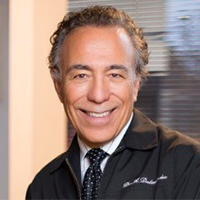 A review of the new new problem in dentistry that will effect all of us dentists, hygienists and patients, “Peri-implantitis”. A discussion of epidemiology, causes and treatment of Peri-implantitis. I will conclude with possible ways to maintain these implants. Finally, how we need to be more aware when placing and restoring implants in the future to avoid some of these problems.
A review of the new new problem in dentistry that will effect all of us dentists, hygienists and patients, “Peri-implantitis”. A discussion of epidemiology, causes and treatment of Peri-implantitis. I will conclude with possible ways to maintain these implants. Finally, how we need to be more aware when placing and restoring implants in the future to avoid some of these problems.
Course Description:
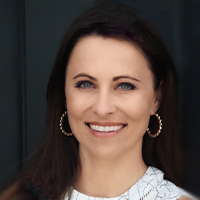 Guided Biofilm Therapy has been a game-changer for systematically approaching patient care. In the wake of this pandemic, when we return to patient care, there may be a feeling of wanting to hand scale only to prevent aerosols. However, this is the time to look at aerosol protocols and come back stronger. Utilizing the systematic approach to GBT will help adequately assess the patients, and help continue the best standard of care while preventing hand fatigue from hand scaling only. In this presentation we will discuss why GBT is a great way to manage biofilm, the ways to control the aerosols including types of HVE, the need for backflow prevention, and proper PPE and environmental infection control protocols.
Guided Biofilm Therapy has been a game-changer for systematically approaching patient care. In the wake of this pandemic, when we return to patient care, there may be a feeling of wanting to hand scale only to prevent aerosols. However, this is the time to look at aerosol protocols and come back stronger. Utilizing the systematic approach to GBT will help adequately assess the patients, and help continue the best standard of care while preventing hand fatigue from hand scaling only. In this presentation we will discuss why GBT is a great way to manage biofilm, the ways to control the aerosols including types of HVE, the need for backflow prevention, and proper PPE and environmental infection control protocols.
- Discuss the steps of Guided Biofilm Management for patient treatment
- Discuss proper HVE for the dental facility
- Understand how backflow prevention may be necessary for use during low and high volume evacuation
- Discuss current PPE for procedures with aerosol production
Course Description:
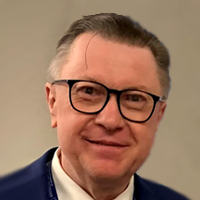 The webinar will address divers traditional, minimal invasive and surgical extraction techniques and provide guidelines how to implement them in daily dental practice for general practitioners.
The webinar will address divers traditional, minimal invasive and surgical extraction techniques and provide guidelines how to implement them in daily dental practice for general practitioners.
Course Description:
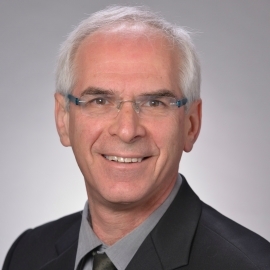 With over a decade of scientific evidence reporting uncompromising reliability, narrow diameter implants signify a major shift in treating a greater range of patients. They are particularly appealing to those patients who previously declined implant treatment due to constraints of anatomy, fear or cost. Dentists everywhere are pausing to take note. Narrow diameter implants show high survival rates and are used clinically for immediate loading of fixed prostheses as their implant design provides high primary stability. Histological evaluation demonstrates a high bone-to-implant-contact-percentage (BIC%), similar to the BIC of conventional diameter implants. These unique implants help to avoid grafting techniques and improve esthetics with documented long-term success. The system reviewed in this course offers a full range of screw retained prosthetic options for overdentures, to single tooth, to full mouth reconstruction.
With over a decade of scientific evidence reporting uncompromising reliability, narrow diameter implants signify a major shift in treating a greater range of patients. They are particularly appealing to those patients who previously declined implant treatment due to constraints of anatomy, fear or cost. Dentists everywhere are pausing to take note. Narrow diameter implants show high survival rates and are used clinically for immediate loading of fixed prostheses as their implant design provides high primary stability. Histological evaluation demonstrates a high bone-to-implant-contact-percentage (BIC%), similar to the BIC of conventional diameter implants. These unique implants help to avoid grafting techniques and improve esthetics with documented long-term success. The system reviewed in this course offers a full range of screw retained prosthetic options for overdentures, to single tooth, to full mouth reconstruction.
COURSE OBJECTIVES
- Recognize the indications of use for narrow diameter implants (any implant less than 3mm in diameter).
- Understand and practice both the surgical and prosthetic protocol for narrow diameter implants.
Course Description:
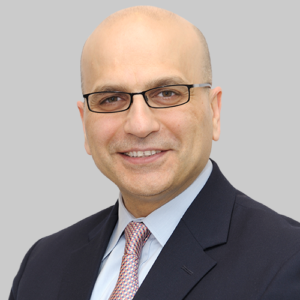 Osseodensification, an evidence-based approach to osteotomy preparation that enhances implant stability and bone density without compromising healing. This lecture will present the biomechanical, histological healing timeline, and clinical data of Osseodensification. It will discuss bone plasticity and its clinical effect and will also cover the clinical versatility of this novel technique including Sub-Crestal Sinus Auto Grafting, Ridge Expansion, Immediate Implant Placement with Osseodensification, and Guided Expansion Graft. Several clinical protocols will be outlined.
Osseodensification, an evidence-based approach to osteotomy preparation that enhances implant stability and bone density without compromising healing. This lecture will present the biomechanical, histological healing timeline, and clinical data of Osseodensification. It will discuss bone plasticity and its clinical effect and will also cover the clinical versatility of this novel technique including Sub-Crestal Sinus Auto Grafting, Ridge Expansion, Immediate Implant Placement with Osseodensification, and Guided Expansion Graft. Several clinical protocols will be outlined.
Learning Objectives: Participant should be able to:
- Understand The scientific principal of Osseodensification.
- Understand bone plasticity biomechanics and its clinical advantages.
- Discuss Osseodensification effect on total implant stability, healing, and what it means biomechanically and histologically (BIC, Bone volume)
- Learn how bone can be enhanced with adequate instrumentation.
- Learn sub-crestal sinus lift protocols.
- Learn how Osseodensification can change the minimum amount of bone needed to predictably place an implant utilizing the Plus1 protocol.
- Learn how to optimize their implant practice and create more with less.
Course Description:
Once a tooth is extracted, the natural wound-healing cascade paired with irreversible alteration occurs. Grafting techniques (hard and soft tissue) and prosthetic manipulations are required to attempt reestablishing the proper hard and soft tissue loses and proper emergence profile. Multiples grafting materials and surgical techniques (hard and soft tissue) compounded with biological modifiers are proposed to repair the amount of ridge deformation.
After this course the participants should be able to:
- Understand the mechanism of bone graft incorporation
- Discuss a new proposed classification
- Incorporate the usage of blood derived biological modifier to enhance the clinical outcome of bone grafting
- Techniques and case presentations
Course Description:
 The pathways of the pulp and periodontium are intimately connected and ignoring one while treating the other can lead to misdiagnoses and improper patient care . This course will provide an in-depth look at these complex interactions, update the provider with the most current diagnostic definitions and help the dentist and hygienist identify teeth that could complicate treatment.
The pathways of the pulp and periodontium are intimately connected and ignoring one while treating the other can lead to misdiagnoses and improper patient care . This course will provide an in-depth look at these complex interactions, update the provider with the most current diagnostic definitions and help the dentist and hygienist identify teeth that could complicate treatment.
Learning Objectives
By the end of the session, the participant will be able to:
- Define both pulpal and periapical diagnoses
- Understand the interconnected pathways of the pulp and periodontium
- Use clinical and imaging techniques to aid the dentist in arriving at a proper diagnosis
Course Description:
 The use of platelet concentrates has had a long-history of use in various fields of medicine as an autologous source of growth factors fabricated utilizing centrifugation of blood under various conditions. While platelet rich plasma (PRP) was proposed as a first-generation platelet concentrate over 3 decades ago, over the past 10 years, platelet rich fibrin (PRF) has seen a steady increase in utilization for a variety of medical procedures due to its lack of anti-coagulation factors favoring fibrin clot formation and faster wound healing. This talk aims to highlight the recent advancements made with respect to the newest formulations of platelet concentrates including recent developments in horizontal centrifugation. Furthermore an understanding of cell layer separation will be presented to further optimize liquid PRF when compared to traditional injectable-PRF protocols. Thereafter, the Bio-Heat technology will be presented with an ability to extend the working properties of PRF from 2-3 weeks towards several months. Furthermore, the launch of the Bio-Cool device allows for the extended use of liquid-PRF for facial esthetic procedures or various regenerative procedures requiring extended working time.
The use of platelet concentrates has had a long-history of use in various fields of medicine as an autologous source of growth factors fabricated utilizing centrifugation of blood under various conditions. While platelet rich plasma (PRP) was proposed as a first-generation platelet concentrate over 3 decades ago, over the past 10 years, platelet rich fibrin (PRF) has seen a steady increase in utilization for a variety of medical procedures due to its lack of anti-coagulation factors favoring fibrin clot formation and faster wound healing. This talk aims to highlight the recent advancements made with respect to the newest formulations of platelet concentrates including recent developments in horizontal centrifugation. Furthermore an understanding of cell layer separation will be presented to further optimize liquid PRF when compared to traditional injectable-PRF protocols. Thereafter, the Bio-Heat technology will be presented with an ability to extend the working properties of PRF from 2-3 weeks towards several months. Furthermore, the launch of the Bio-Cool device allows for the extended use of liquid-PRF for facial esthetic procedures or various regenerative procedures requiring extended working time.
- Optimization of protocols for any centrifugation device
- Update on Bio-Heat technology and the ability to extend the working properties of PRF from 2-3 weeks to 4-6 months
- Improve cell and growth factor release using concentrated-PRF (C-PRF) protocols when compared to traditional injectable-PRF (i-PRF)
- Launch of the Bio-Cool technology
- Importance of PRF tubes for the fabrication of PRF
- Coupon code for Free access to the online 8CE program at www.prf-edu.com
Course Description:
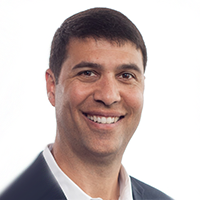 These are crazy times indeed! In this webinar I will review what a normal marketing program should look like, and what specific adjustments you should make during this downturn. We will discuss which marketing activities you can probably stop doing for now, and which activities you should keep doing to create a new patient windfall when practices reopen.
These are crazy times indeed! In this webinar I will review what a normal marketing program should look like, and what specific adjustments you should make during this downturn. We will discuss which marketing activities you can probably stop doing for now, and which activities you should keep doing to create a new patient windfall when practices reopen.
Course Description:
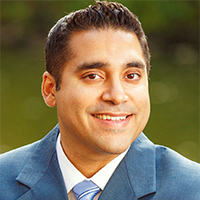 This presentation will highlight the use of CBCT technology & digital workflow in planning & executing immediate incisor & molar implant placement. The benefits of immediate implant placement & placement of an immediate provisional restoration designed from the digital workflow will be demonstrated. The use of regenerative products & blood biologics (PRF/PRP) will also be discussed.
This presentation will highlight the use of CBCT technology & digital workflow in planning & executing immediate incisor & molar implant placement. The benefits of immediate implant placement & placement of an immediate provisional restoration designed from the digital workflow will be demonstrated. The use of regenerative products & blood biologics (PRF/PRP) will also be discussed.
Objectives:
- Understand the benefits of using 3D planning in implant dentistry
- Understand the importance of implant connection widths
- Understand the need for proper implant placement depth
- Understand the benefits of immediate implant placement & immediate provisionals
- Understand the benefits of using regenerative products and blood biologics in implant surgery
Course Description:
 What are the differences between rhPDGF and PRF/PRP? Does PDGF, or rhPDGF, really stimulate bone regeneration, or is it just for soft tissue healing? How does rhPDGF compare to other biologics, such as Emdogain or Amnion tissue? How can I optimize my clinical results and decrease my complications using rhPDGF? These are common questions by many clinicians. Dr. Lynch will address each of these questions, and many more, using both clinical cases and peer reviewed publications.
What are the differences between rhPDGF and PRF/PRP? Does PDGF, or rhPDGF, really stimulate bone regeneration, or is it just for soft tissue healing? How does rhPDGF compare to other biologics, such as Emdogain or Amnion tissue? How can I optimize my clinical results and decrease my complications using rhPDGF? These are common questions by many clinicians. Dr. Lynch will address each of these questions, and many more, using both clinical cases and peer reviewed publications.
Learning Objectives:
- What is PDGF (platelet-derived growth factor), and how does it work?
- How does rhPDGF compare to other biologics, such as PRP/PRF? Amnion tissue? Emdogain?
- How can you incorporate rhPDGF into your practice to increase your clinical success?
Course Description:
 Dentistry can address the loss of the interdental papilla using three possible approaches. Restorative materials to fill the embrasure space orthodontic treatment to move the teeth closer together or surgery to add tissue to this small space. This presentation discusses when each particular discipline is the appropriate approach. The presentation will a show how microsurgery can be utilized to add tissue volume in this delicate area. Dr. Nordland has published his microsurgical technique in several well refereed journals and also in the latest textbook “Esthetics in Dentistry”.
Dentistry can address the loss of the interdental papilla using three possible approaches. Restorative materials to fill the embrasure space orthodontic treatment to move the teeth closer together or surgery to add tissue to this small space. This presentation discusses when each particular discipline is the appropriate approach. The presentation will a show how microsurgery can be utilized to add tissue volume in this delicate area. Dr. Nordland has published his microsurgical technique in several well refereed journals and also in the latest textbook “Esthetics in Dentistry”.
Course Description:
 Today, dental implants have the potential to be very predictable. Do they really have a better prognosis than natural teeth? When do you “give up” and remove and replace periodontally compromised teeth with dental implant restorations? Is maintenance of dental implant similar to maintaining teeth? How to apply implants to these cases is a “scientific art” that is now the standard of care in dentistry. Predictable soft and hard tissue regeneration, so crucial to the clinical success of each case is highly dependent on the appropriate selection of material as well as the technique and approach. With abundance of newer materials on the market, the clinician is given the task to marry the right material and technique, often without much scientific guidance. This presentation will review the existing evidence on the science of osseointegration, and clinical studies that validate long-term health of dental implant restorations. What factors, if any, do play a role in the breakdown of dental implant support? What should the home care, and professional maintenance protocol be? Do the materials, techniques, and implant systems that a clinician chooses have any bearing on these factors? The presenter will highlight various innovations in soft and hard tissue handling techniques in recent years. Dr. Kim will also review the essence of implant maintenance protocols, diagnosis and recognition of peri-implant diseases, together with a systemic review as to how peri-implant break down can be prevented. Learning objectives: – Understand the biology, pathogenesis and etiology of peri-implant mucositis and peri-implantitis – Understand how clinicians should manage soft tissue around dental implants – Understand the soft tissue-restorative relationships and how this knowledge affects the restoration designs – Understand when to probe around dental implants, and how to instrument around dental implants
Today, dental implants have the potential to be very predictable. Do they really have a better prognosis than natural teeth? When do you “give up” and remove and replace periodontally compromised teeth with dental implant restorations? Is maintenance of dental implant similar to maintaining teeth? How to apply implants to these cases is a “scientific art” that is now the standard of care in dentistry. Predictable soft and hard tissue regeneration, so crucial to the clinical success of each case is highly dependent on the appropriate selection of material as well as the technique and approach. With abundance of newer materials on the market, the clinician is given the task to marry the right material and technique, often without much scientific guidance. This presentation will review the existing evidence on the science of osseointegration, and clinical studies that validate long-term health of dental implant restorations. What factors, if any, do play a role in the breakdown of dental implant support? What should the home care, and professional maintenance protocol be? Do the materials, techniques, and implant systems that a clinician chooses have any bearing on these factors? The presenter will highlight various innovations in soft and hard tissue handling techniques in recent years. Dr. Kim will also review the essence of implant maintenance protocols, diagnosis and recognition of peri-implant diseases, together with a systemic review as to how peri-implant break down can be prevented. Learning objectives: – Understand the biology, pathogenesis and etiology of peri-implant mucositis and peri-implantitis – Understand how clinicians should manage soft tissue around dental implants – Understand the soft tissue-restorative relationships and how this knowledge affects the restoration designs – Understand when to probe around dental implants, and how to instrument around dental implants
Course Description:

Dr. Noumbissi: Ceramics have been able to adapt and keep up with the ever changing needs in dentistry and like many other materials and technologies they have been adopted from engineering and modified to solve clinical challenges. However the inherent brittleness, low flexural strength, fracture toughness of conventional glass and alumina ceramics have been the main obstacle for their extensive use. The discovery of ceramic oxides broadened the range of application of ceramics in dentistry and dental implantology in particular. The last decade has been one where we have witnessed an “explosion” in the use of zirconia in dentistry. Along with this phenomenon the manufacturing protocols and advanced formulas of zirconia have been created which have led to zirconia becoming a stable, biocompatible, bioinert and structurally stable implant material. Today in dental implantology there are two main zirconia ceramic implant biomaterials namely Yttria Stabilized Tetragonal Zirconia (Y-TZP) and Alumina Toughened Zirconia (ATZ). This presentation will cover zirconia as an implantable bioceramic, the rationale and the indications and benefits of metal free teeth replacement. Clinical cases completed with zirconia dental implants and prosthetics will also be presented.
Dr. Gupta: Zirconia is gaining interest as a ceramic biomaterial for dental implant applications due to its superior biocompatibility and desirable mechanical properties. The long term success of ceramic dental implants mostly depends on rapid healing with optimal osseointegration into the jaw bone. Surface topography and cellular response are crucial factors for the short and longterm success of these dental implants. This presentation will review the different surface modalities and their influence on the rate and quality of osseointegration with ceramic implants.
Course Description:
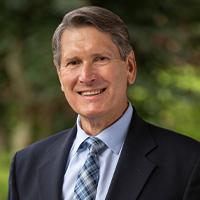 These innovative dental procedures, combining regenerative periodontal therapy with orthodontic treatment, enable the dentist to minimize potential iatrogenic risk factors associated with orthodontic therapy (see below). Favorably positioned teeth, plus an enhanced muco-gingival complex, facilitates ideal and predictable esthetics and function.
These innovative dental procedures, combining regenerative periodontal therapy with orthodontic treatment, enable the dentist to minimize potential iatrogenic risk factors associated with orthodontic therapy (see below). Favorably positioned teeth, plus an enhanced muco-gingival complex, facilitates ideal and predictable esthetics and function.
Learning Objectives:
- Fundamental etiology of gingival recession, apical root resorption and post orthodontic relapse
- Limitations and complications of orthodontic treatment.
- Introducing POPA into the general and specialty dental office
- Minimizing the risk of gingival recession, root resorption and extended orthodontic treatment time.
- Evidence supporting the concepts of POPA
Course Description:
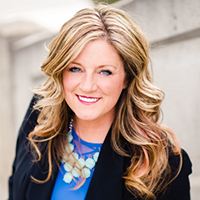 These devices are sleek, easy to use and all the rage among teens, young adults and those seeking to quit traditional cigarettes. But what is the impact on oral health? Let’s explore the current vape culture and address specific health concerns and the role of the healthcare provider.
These devices are sleek, easy to use and all the rage among teens, young adults and those seeking to quit traditional cigarettes. But what is the impact on oral health? Let’s explore the current vape culture and address specific health concerns and the role of the healthcare provider.
Course Objectives:
- Explore vaping/smoking trends and products
- Identify potential health risks associated with vaping devices
- Understand the link between COVID-19 and smoking/vaping
Course Description:
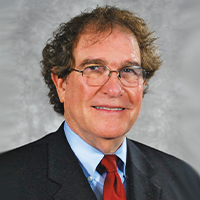 This course will look at the clinical and radiographic parameters required to make a diagnosis of different periodontal diseases. Each parameter will be evaluated and discussed with a perspective as to its clinical importance. Dr. Drury will call upon his 40 plus years of clinical practice and teaching of current periodontal literature; and sixteen years as editor of “Periodontal Abstracts” to help with the discussion. The attendees will be provided a strong review of periodontal diagnosis, looking at all the different elements in gathering diagnostic information to best serve their patients.
This course will look at the clinical and radiographic parameters required to make a diagnosis of different periodontal diseases. Each parameter will be evaluated and discussed with a perspective as to its clinical importance. Dr. Drury will call upon his 40 plus years of clinical practice and teaching of current periodontal literature; and sixteen years as editor of “Periodontal Abstracts” to help with the discussion. The attendees will be provided a strong review of periodontal diagnosis, looking at all the different elements in gathering diagnostic information to best serve their patients.
Learning Objectives:
- Learn to identify clinical and radiographic parameters required for periodontal diagnosis.
- Understand those parameters and their relevance to clinical practice.
- The importance of considering all signs and symptoms in periodontal diagnosis.
Course Description:
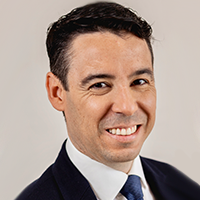 The digital workflow in implant dentistry has been challenging clinicians to incorporate that concept in their treatment planning routine. There are many tools/software that can be used and this presentation will demonstrate how clinicians can take advantage of those to achieve better results. On the same hand Zirconia Implants demands a perfect surgical positioning especially the Monotypes. Therefore, digital planning fits perfectly with Ceramic Implantology Philosophy allowing less invasive procedures and predictability.
The digital workflow in implant dentistry has been challenging clinicians to incorporate that concept in their treatment planning routine. There are many tools/software that can be used and this presentation will demonstrate how clinicians can take advantage of those to achieve better results. On the same hand Zirconia Implants demands a perfect surgical positioning especially the Monotypes. Therefore, digital planning fits perfectly with Ceramic Implantology Philosophy allowing less invasive procedures and predictability.
Course Description:
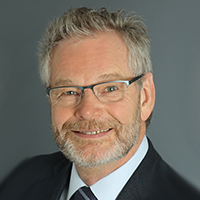 Dental Implants have improved the quality of care available to patients. However, the prevalence of complications is still troubling. Dr Svoboda has identified the root causes of those problems that are due to current prosthesis installation techniques. He has named them “The Old Dragons”, because they have been frustrating the efforts of dentists for a very long time. Let Dr. Svoboda show you how to tame those Old Dragons to make your treatment more predictable. Remember, an ounce of preventions is worth more than you think, because peace of mind is priceless.
Dental Implants have improved the quality of care available to patients. However, the prevalence of complications is still troubling. Dr Svoboda has identified the root causes of those problems that are due to current prosthesis installation techniques. He has named them “The Old Dragons”, because they have been frustrating the efforts of dentists for a very long time. Let Dr. Svoboda show you how to tame those Old Dragons to make your treatment more predictable. Remember, an ounce of preventions is worth more than you think, because peace of mind is priceless.
Learning objectives:
- Learn how to identify the Old Dragons of Dentistry
- Learn how to separate them
- Learn how to tame them to prevent complications
- Learn how to apply these new ideas to make your life and the lives of your patients better
Course Description:
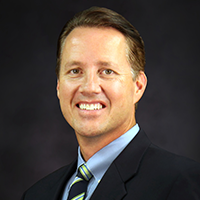 Legally Mine provides medical professionals with the knowledge and tools to protect their assets from lawsuits, build professional license safeguards into their legal structures and legitimately reduce their tax liability.
Legally Mine provides medical professionals with the knowledge and tools to protect their assets from lawsuits, build professional license safeguards into their legal structures and legitimately reduce their tax liability.
By attending our course attendees will learn how to:
- Eliminate costly legal fees associated with lawsuits.
- Protect their earning power.
- Utilize proven tax strategies.
- Keep their name and license off of the NPDB.
Course Description:
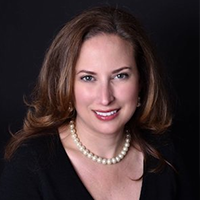 This course demonstrates the role of periodontal endoscopy and its benefits. Participants will analyze the processes and results of traditional pocket reduction surgery compared to non-surgical endoscope treatment. We will explore advanced diagnostics via magnified sub-gingival visualization which allows clinicians to identify periodontal and peri-implant etiologies and potential complications with healing. Explore adjunctive therapies – such as lasers and enamel matrix protein – that create an ideal environment for gingival attachment and in some cases, bone regeneration.
This course demonstrates the role of periodontal endoscopy and its benefits. Participants will analyze the processes and results of traditional pocket reduction surgery compared to non-surgical endoscope treatment. We will explore advanced diagnostics via magnified sub-gingival visualization which allows clinicians to identify periodontal and peri-implant etiologies and potential complications with healing. Explore adjunctive therapies – such as lasers and enamel matrix protein – that create an ideal environment for gingival attachment and in some cases, bone regeneration.
Course Description:
 Microphotography is the art of capturing quality pictures through the dental operative microscope. This presents a very difficult challenge for many microscope users because there is very limited available information with regards to how successfully take photographs under the DOM. In order to capture better pictures, it is necessary to have fundamental knowledge about the relationship between the camera and the microscope. Basic knowledge of exposure and camera settings is also essential. Cluadia Cotca will be speaking about the Global GoPro Duo integration and uses.
Microphotography is the art of capturing quality pictures through the dental operative microscope. This presents a very difficult challenge for many microscope users because there is very limited available information with regards to how successfully take photographs under the DOM. In order to capture better pictures, it is necessary to have fundamental knowledge about the relationship between the camera and the microscope. Basic knowledge of exposure and camera settings is also essential. Cluadia Cotca will be speaking about the Global GoPro Duo integration and uses.
Objectives:
- During this webinar, the participants will learn about the relationship between the microscope and the camera and the challenges that each one presents.
- The learner will also gain knowledge about how to control and minimize vibration for optimal photo capture. The importance of focal point in photography will be discussed so that the clinician take superior photos. The participant will learn how to get the most out of the microscope light in microphotography.
Course Description:
 Ceramics are easier – but different. Over 20+ years’ of ceramic implant therapy experience has shown that when incorporating a modified treatment planning and surgical technique approach to your case, can improve your overall success with ceramic implants. This presentation will discuss parts of the Swiss-based “All-in-One” concept approach utilizing enhanced nutritional and vitamin therapy for desired bone healing results and patient overall health, proper implant selection using one and two-piece tapered implant design options incorporating Dynamic threads, replacing traditional osteotomy preparation techniques with those which work by bone class for ideal primary stability, and creating proper immediate restorations for overall predictable results. Along with this, history and case work evidence will be also be discussed.
Ceramics are easier – but different. Over 20+ years’ of ceramic implant therapy experience has shown that when incorporating a modified treatment planning and surgical technique approach to your case, can improve your overall success with ceramic implants. This presentation will discuss parts of the Swiss-based “All-in-One” concept approach utilizing enhanced nutritional and vitamin therapy for desired bone healing results and patient overall health, proper implant selection using one and two-piece tapered implant design options incorporating Dynamic threads, replacing traditional osteotomy preparation techniques with those which work by bone class for ideal primary stability, and creating proper immediate restorations for overall predictable results. Along with this, history and case work evidence will be also be discussed.
Course Description:
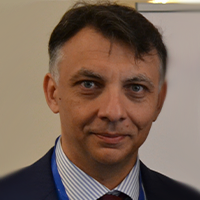 In the last five decades dental implants have become an established treatment for replacement of missing teeth and the predominant used material today is commercially pure titanium. Zirconia ceramics have been proposed as an alternative implant material. The biggest advantage of zirconium to titanium is obviously the biocompatibility and good esthetic results. Zirconia was successfully used as a substitute for titanium in patients who exhibited hypersensitivity after titanium The two-piece ceramic eliminates any challenges from one piece implants while still providing all the benefits from high performance ceramic implants including optimal soft tissue response and low plaque adhesion. This lecture will include clinical assessment and treatment planning for the use of two piece all zirconia implants.
In the last five decades dental implants have become an established treatment for replacement of missing teeth and the predominant used material today is commercially pure titanium. Zirconia ceramics have been proposed as an alternative implant material. The biggest advantage of zirconium to titanium is obviously the biocompatibility and good esthetic results. Zirconia was successfully used as a substitute for titanium in patients who exhibited hypersensitivity after titanium The two-piece ceramic eliminates any challenges from one piece implants while still providing all the benefits from high performance ceramic implants including optimal soft tissue response and low plaque adhesion. This lecture will include clinical assessment and treatment planning for the use of two piece all zirconia implants.
Course Description:
T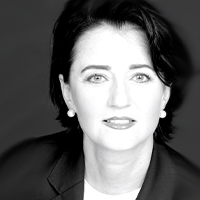 his presentation will focus on the summary of COVID19 pathophysiological process of disease, particularly highlighting the oral tissues functionality in diagnosis, disease progression and treatment mediation. It will further identify the nuances of future anticipation in preparation of likely expected continued mutational variation and the potential of the oral mediated systemic profile and response.
his presentation will focus on the summary of COVID19 pathophysiological process of disease, particularly highlighting the oral tissues functionality in diagnosis, disease progression and treatment mediation. It will further identify the nuances of future anticipation in preparation of likely expected continued mutational variation and the potential of the oral mediated systemic profile and response.
- Virology, Pathophysiologic process, & Clinical Toxicity of COVID19.
- Oral systemic vector on exposure, entry, tissue interaction, systemic distribution and immediate and phased immune response related to COVID19.
- Dental clinical protocols modification assessment in requirements for COVID 19 like strain consideration of interdisciplinary medicine and systemic profile of patients, including interference of clinical toxicity of medications.
- Appreciation of the adaptation of correct disease assessment approach will not only increase clinical outcome onset but also protect in longitudinal stability of population health in reducing comorbidities.
Course Description:
 The introduction of the dental operating microscope triggered a rapid transition from conventional dentistry to the precise and detailed world of micro-dentistry. However, not all clinicians are willing to invest the time needed to overcome the learning curve for being able to use the microscope in the most effective manner. The 3D surgical microscope offers an outstanding depth of field, crystal clear imaging, wide range of ergonomic positions, powerful magnification, illumination and an easy to use clinical documentation system; all mentioned advantages in conjunction, will decrease the learning curve to make the transition from regular dentistry to Micro-Dentistry, frustration-free and enjoyable. Dr. Argueta will describe how the 3D microscope may be used to best advantage by the dentist to enhance clinical results, obtain digital material for teaching purposes, clinical explanations, reduce stress and avoid the so common neck and back pain in dental practitioners that, too often, will decrease the ability to practice dentistry and earn a living.
The introduction of the dental operating microscope triggered a rapid transition from conventional dentistry to the precise and detailed world of micro-dentistry. However, not all clinicians are willing to invest the time needed to overcome the learning curve for being able to use the microscope in the most effective manner. The 3D surgical microscope offers an outstanding depth of field, crystal clear imaging, wide range of ergonomic positions, powerful magnification, illumination and an easy to use clinical documentation system; all mentioned advantages in conjunction, will decrease the learning curve to make the transition from regular dentistry to Micro-Dentistry, frustration-free and enjoyable. Dr. Argueta will describe how the 3D microscope may be used to best advantage by the dentist to enhance clinical results, obtain digital material for teaching purposes, clinical explanations, reduce stress and avoid the so common neck and back pain in dental practitioners that, too often, will decrease the ability to practice dentistry and earn a living.


